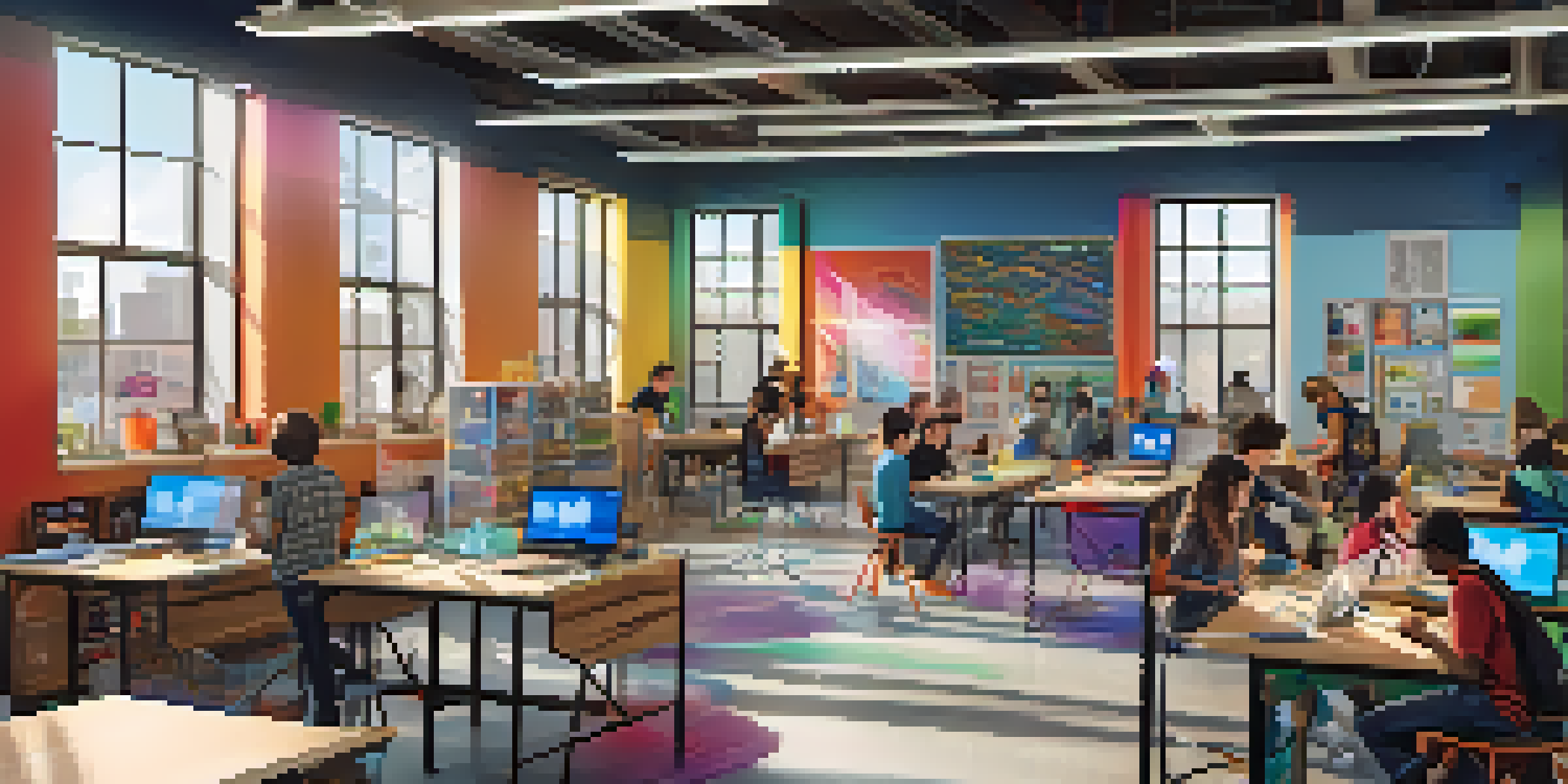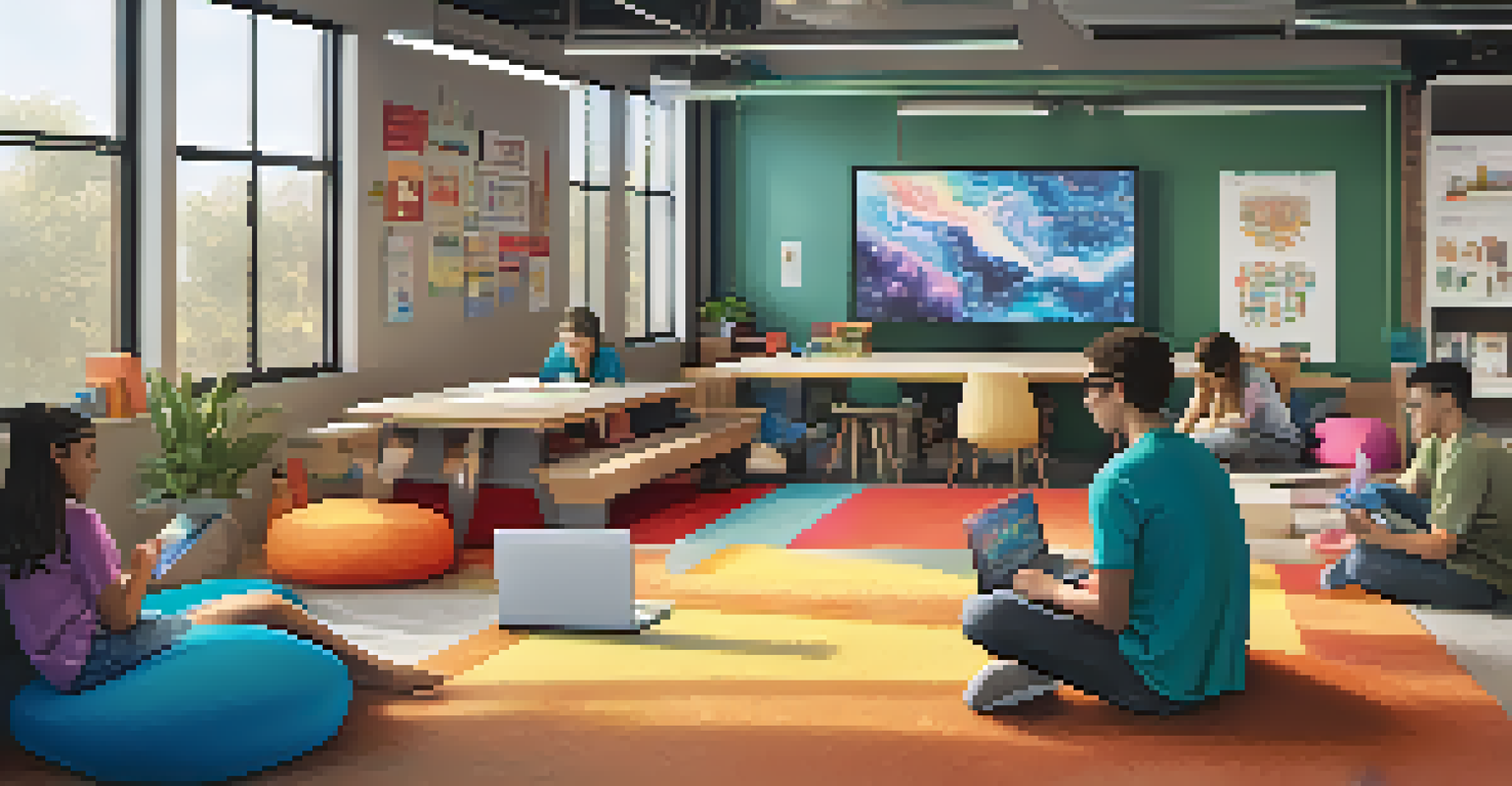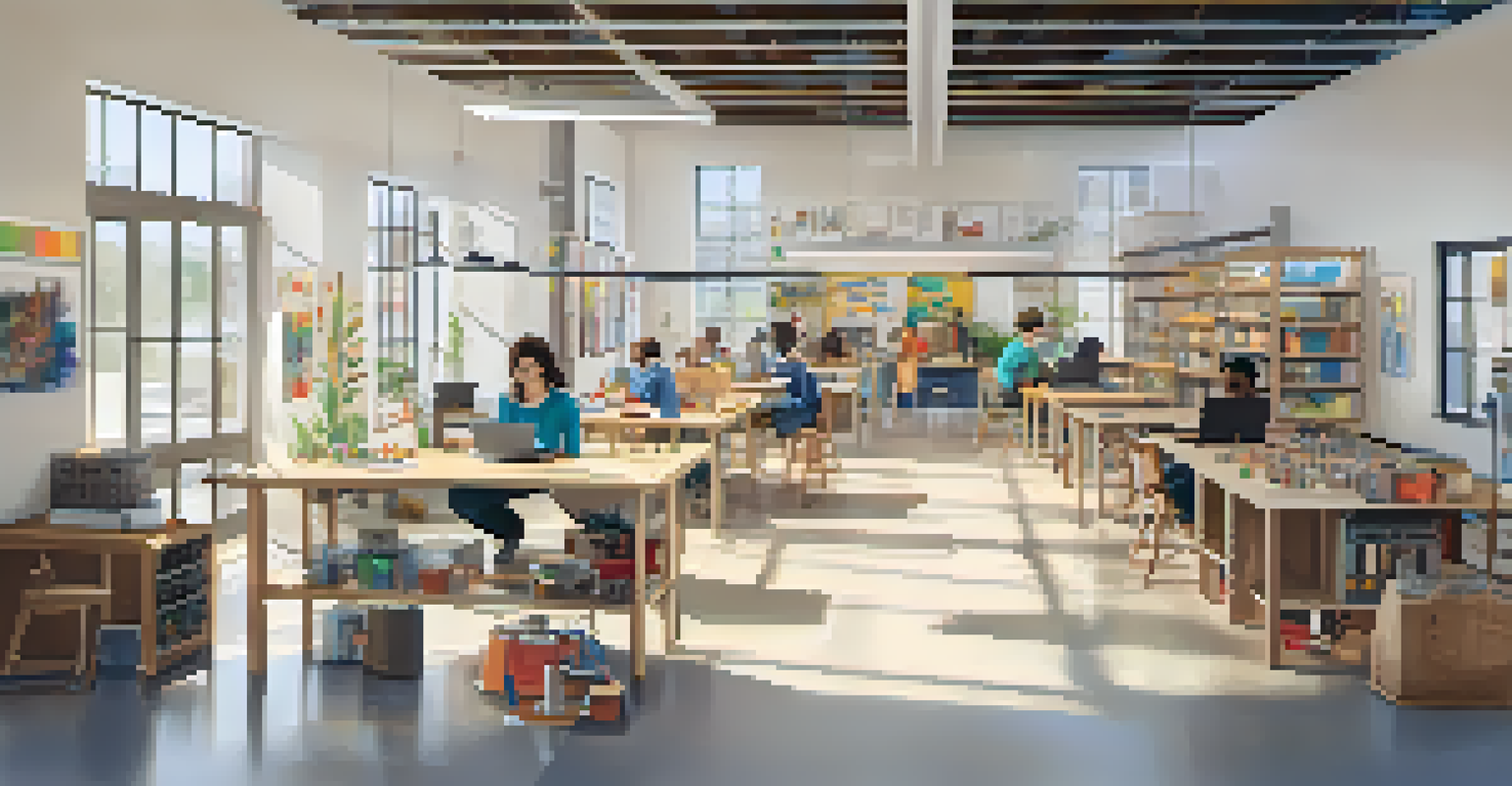Creating a Makerspace: Strategies for STEAM Learning

Understanding the Importance of a Makerspace in Education
A makerspace is more than just a room filled with tools; it's a vibrant hub of creativity and innovation. In today’s educational landscape, integrating STEAM (Science, Technology, Engineering, Arts, and Mathematics) learning is crucial. These fields encourage students to think critically and solve problems collaboratively, fostering a hands-on approach to learning.
The future belongs to those who believe in the beauty of their dreams.
By providing a dedicated space for experimentation, students can explore concepts in a tactile way, which enhances retention and understanding. Imagine a classroom where students can build a robot one day and create a digital artwork the next. This versatility is what makes makerspaces a critical component of modern education.
Moreover, makerspaces help students develop essential life skills such as teamwork, resilience, and adaptability. As they navigate challenges and celebrate successes together, they build a sense of community that enriches their educational experience.
Essential Elements to Include in Your Makerspace
When setting up a makerspace, it's important to include a mix of tools and resources that cater to diverse interests and skill levels. Think of your makerspace as a playground for creativity—equipping it with everything from 3D printers and coding stations to art supplies and woodworking tools. This variety will encourage students to experiment with different mediums and technologies.

In addition to physical tools, ensure that you have ample digital resources, such as software for design and coding. Access to online tutorials and guides can empower students to learn at their own pace, making the space even more inviting and engaging. It’s like giving them a treasure map to explore the world of STEAM.
Makerspaces Boost Creativity
Makerspaces provide a hands-on environment where students can explore STEAM concepts through creative problem-solving.
Finally, don’t forget about the importance of comfortable and flexible seating arrangements. A cozy, adaptable environment helps students feel at ease, allowing their creativity to flourish. By creating a welcoming atmosphere, you’ll encourage collaboration and innovation among your students.
Incorporating Technology into Your Makerspace
Technology is a cornerstone of any effective makerspace, especially when it comes to STEAM learning. Integrating tools like robotics kits, coding platforms, and virtual reality can elevate the learning experience. For instance, using a robotics kit can transform a simple lesson on mechanics into an exciting project where students build and program their robots.
Education is not the filling of a pail, but the lighting of a fire.
Moreover, digital tools can help streamline the design process. Software programs for 3D modeling allow students to visualize their ideas before bringing them to life. This step not only fosters critical thinking but also encourages iterative learning, as students can refine their designs based on feedback.
Incorporating technology also means staying current with trends and innovations. Regularly updating your makerspace with the latest tools and resources can keep students engaged and excited about their projects. It’s like having a constantly evolving playground that challenges and inspires them.
Fostering Collaboration and Community in Makerspaces
Collaboration is at the heart of effective makerspaces. Encourage students to work together on projects, share ideas, and learn from each other. This sense of community not only enhances the learning experience but also mirrors real-world scenarios where teamwork is essential.
Consider organizing group challenges or projects that require cooperation. For example, you could host a 'design-a-solution' event where students team up to address a local issue using STEAM principles. This not only promotes collaboration but also empowers them to make a difference in their community.
Collaboration Enhances Learning
Encouraging teamwork in makerspaces fosters a sense of community and mirrors real-world scenarios requiring collaboration.
Additionally, inviting local experts or community members to share their knowledge can enrich the makerspace experience. Whether through workshops or guest lectures, these interactions can inspire students and broaden their understanding of how STEAM is applied in various fields.
Designing a Flexible and Inspiring Makerspace Layout
The layout of your makerspace plays a crucial role in encouraging creativity and collaboration. A flexible design that allows for different configurations will enable students to work individually or in groups. Think of it as creating a canvas where students can paint their learning experience.
Incorporate distinct zones within the space for various activities, such as a quiet area for focused work, a collaborative zone for group projects, and a showcase area for displaying completed works. This separation can help students choose the right environment for their tasks, fostering both concentration and collaboration.
Also, consider adding elements of inspiration throughout the space, such as posters, quotes, or student artwork. These visual cues can motivate and spark creativity, making the makerspace a vibrant and energizing place to learn.
Encouraging Student Ownership and Initiative
Empowering students to take ownership of their learning is essential in a makerspace. Allow them to propose projects or themes they are passionate about, which can ignite their enthusiasm and commitment. When students feel like their ideas are valued, they are more likely to engage deeply with their work.
Creating a system for students to lead workshops or share skills with their peers can also foster a sense of ownership. For instance, if a student excels in coding, they could host a workshop to teach others. This not only builds confidence but also reinforces their learning through teaching.
Flexible Layout Inspires Innovation
A well-designed makerspace layout with distinct zones promotes both individual focus and group collaboration, enhancing the learning experience.
Moreover, encouraging reflection on their projects can help students develop critical thinking skills. Ask them to consider what worked, what didn’t, and how they can improve next time. This practice of self-assessment cultivates a growth mindset, essential for lifelong learning.
Assessing Learning Outcomes in a Makerspace
Assessing learning outcomes in a makerspace can be challenging, but it’s crucial for understanding student progress. One effective approach is to use project-based assessments, where students showcase their completed projects. This allows them to demonstrate their skills and understanding in a practical way, rather than relying solely on tests.
Incorporate self-assessment and peer feedback into the evaluation process. Encourage students to reflect on their contributions to group projects and provide constructive feedback to their peers. This not only promotes accountability but also enhances their communication skills.

Lastly, consider using portfolios to document student work over time. Portfolios provide a comprehensive view of a student’s growth and learning journey, showcasing their creativity and problem-solving abilities. It’s like building a scrapbook of their achievements, making their progress tangible and rewarding.